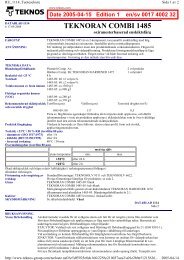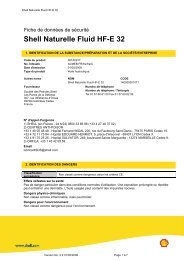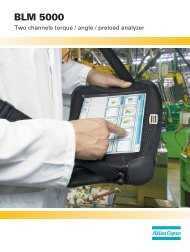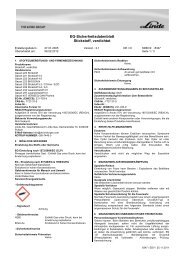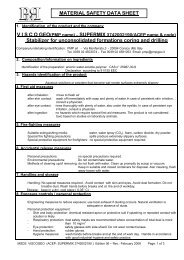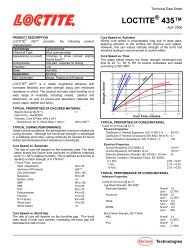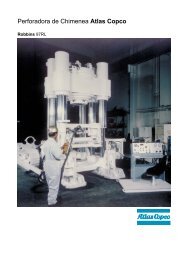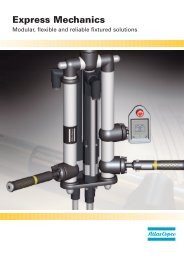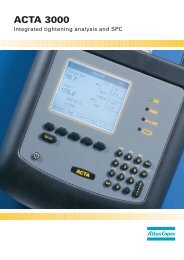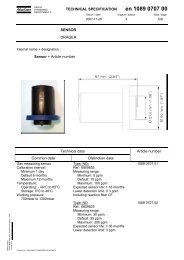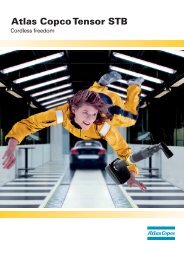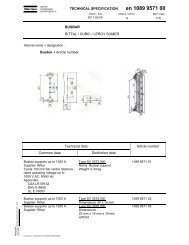Ergonomics - Atlas Copco
Ergonomics - Atlas Copco
Ergonomics - Atlas Copco
You also want an ePaper? Increase the reach of your titles
YUMPU automatically turns print PDFs into web optimized ePapers that Google loves.
How can we use declared values?<br />
We can compare machines of different de-<br />
signs or makes. It is probable that machines<br />
with low values in a laboratory test will<br />
have low values in an actual work situation.<br />
Anyone who has been involved in vibration<br />
measurements knows that these are dif-<br />
ficult to perform in a laboratory situation.<br />
Vibration measurements are even more<br />
difficult to perform in a real work situation,<br />
and far more costly as well.<br />
Bearing this in mind, it is natural that<br />
persons with the task of assessing the expo-<br />
sure risk will base their calculations on the<br />
declared values. The standards for meas-<br />
uring vibration, use just one transducer<br />
location. Yet along a handle, vibrations can<br />
vary by a factor of five. The standard figure<br />
is derived with an artificial load on the ma-<br />
chine. Taking into consideration all types<br />
of inserted tools and the different ways in<br />
which operators use their machines, results<br />
from one transducer location will vary by a<br />
factor of three in practice.<br />
The other important parameter is<br />
exposure time. A simple parameter one<br />
would think, yet difficult to estimate unless<br />
the task to be analysed is cyclical. In addi-<br />
tion, operators often use several different<br />
machines, therefore the total accumulated<br />
exposure should be calculated.<br />
Even standard ISO 5349 itself contains<br />
pitfalls. For example, the dose-response<br />
relationship is based on a limited number of<br />
research reports and is intended to give an<br />
indication of what is likely to happen when<br />
a number of operators are exposed over a<br />
period of several years.<br />
Taking all this into consideration, one<br />
might conclude that the declared values<br />
cannot be used at all. It is our belief, how-<br />
ever, that we can use this information for<br />
rough screening purposes, particularly<br />
when conducting multi-stressor analyses.<br />
The CE standardization group work-<br />
ing with the question of how to implement<br />
2002/44/EG, the Physical Agents (Vibration)<br />
Directive has reached the same conclusion.<br />
In a technical report CEN/TR 15350 it is sug-<br />
gested that the first rough exposure assess-<br />
ment could be based on the declared values<br />
multiplied by a given correction factor.<br />
For most industrial tools the correction<br />
factor is 1.5. For chipping hammers in fet-<br />
tling operations the correction is set to 2.<br />
Another important correction is for tools<br />
with declared values below 2.5 m/s 2 . For<br />
those tools, 2.5 m/s 2 should be used as the<br />
declared value in exposure assessments<br />
even when a lower declared value is given.<br />
In the following evaluation we use the<br />
guidelines from CEN/TR 15350. It should<br />
113



